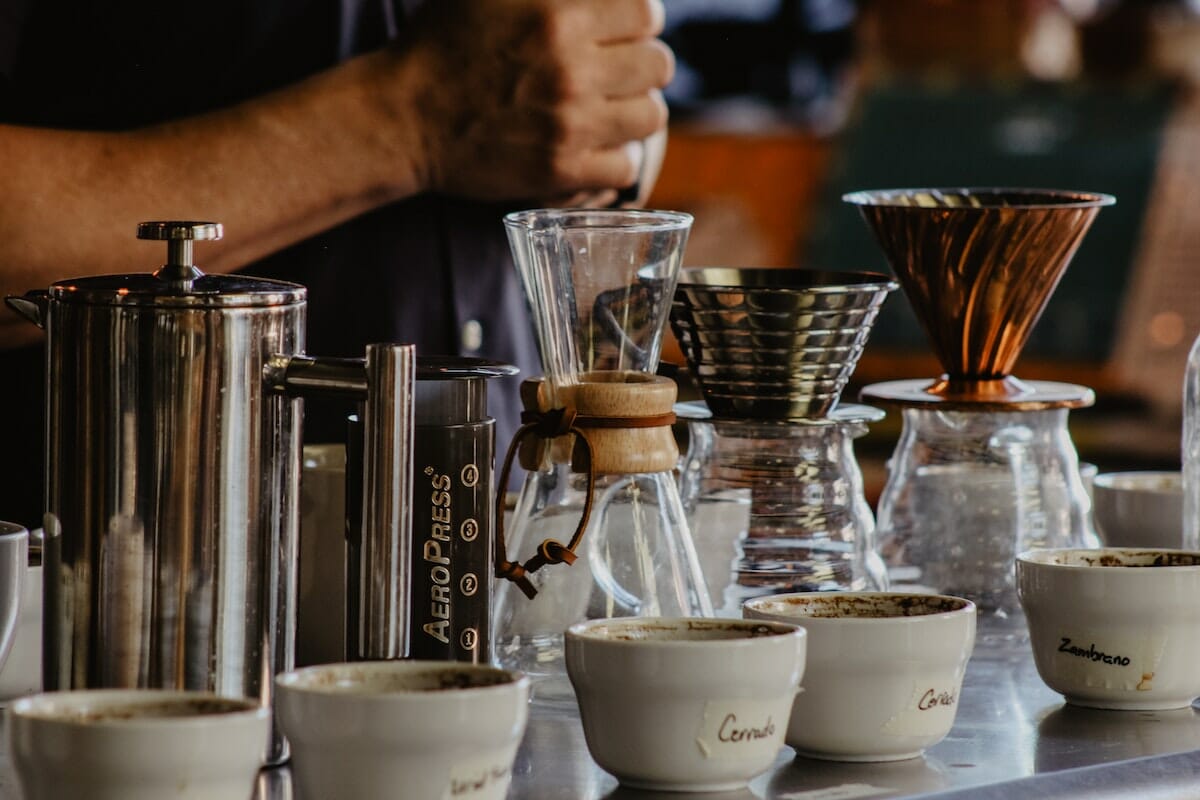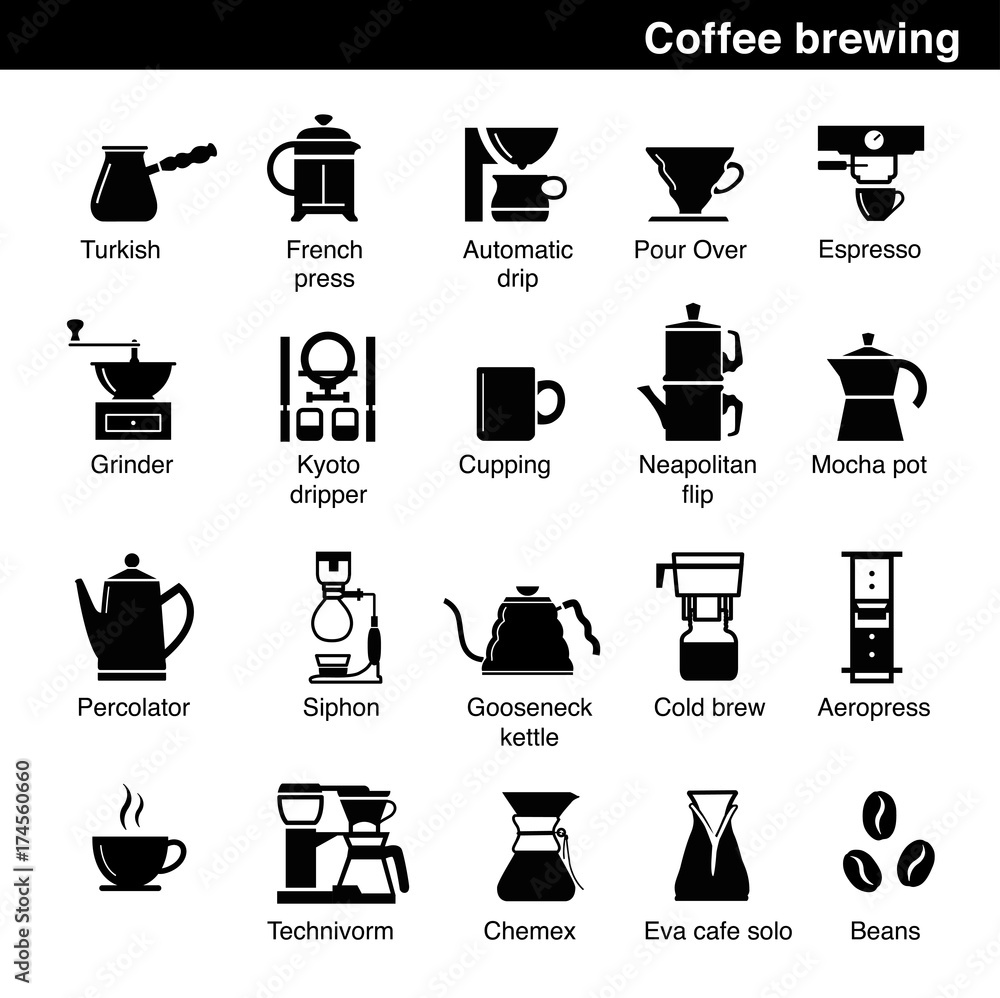Checking Out the very best Coffee Brewing Methods for Perfect Flavor Every Single Time
Checking Out the very best Coffee Brewing Methods for Perfect Flavor Every Single Time
Blog Article
The Scientific Research Behind Coffee Developing: Just How Temperature Level and Time Affect Your Drink
Recognizing the science behind coffee brewing exposes that temperature level and time are not plain variables yet essential aspects that dictate the drink's taste account and overall quality. As we check out the subtleties of these aspects, the inquiry emerges: just how can one properly equilibrium temperature and time to achieve that perfect brew?
The Chemistry of Coffee Extraction
The chemistry of coffee extraction looks into the complex processes that transform raw coffee beans right into the fragrant beverage taken pleasure in worldwide. This change mainly includes the solubility of numerous compounds present in the beans, which are affected by variables such as work size, water high quality, and the brewing approach employed.
During the brewing procedure, warm water serves as a solvent, removing soluble compounds, consisting of caffeine, acids, sugars, and lipids, from the coffee premises. Each compound contributes to the flavor profile, scent, and body of the final drink. Acids are responsible for intense and tangy notes, while oils contribute to a rich mouthfeel.
The first phases of brewing essence acids and sugars, leading to an enjoyable acidity, while prolonged removal can lead to bitterness due to over-extraction of undesirable substances. Understanding these chemical interactions is vital for enhancing brewing techniques, as the equilibrium between removal time and water temperature can substantially affect the total quality of the coffee.
Perfect Developing Temperatures
Locating the ideal brewing temperature level is necessary for opening the complete potential of coffee tastes and aromas - coffee brewing methods. Research suggests that the optimal array for brewing coffee lies between 195 ° F to 205 ° F(90 ° C to 96 ° C) Within this variety, the extraction process effectively dissolves the preferable soluble compounds in coffee beans, causing a balanced and delicious cup
Developing at lower temperature levels, such as below 195 ° F(90 ° C ), might lead to under-extraction, yielding a weak and acidic brew with low-key tastes. On the other hand, developing at temperatures going beyond 205 ° F(96 ° C) can cause over-extraction, generating a bitter and extreme taste because of the extreme dissolution of unwanted compounds, such as tannins.
Additionally, the suitable developing temperature level can vary depending on the coffee bean kind and roast degree. For example, lighter roasts usually benefit from a little greater temperatures to boost their intricate flavor profiles, while darker roasts may be much better fit to lower temperatures to mitigate anger.
Eventually, preserving accuracy in brewing temperature levels is vital for achieving a harmonious equilibrium of flavors, making certain that every cup of coffee provides a rewarding sensory experience.
Impact of Brewing Time
Brewing time plays a critical duty in identifying the flavor account and total high quality of coffee. Much shorter developing times can result in under-extraction, leading to a weak or sour flavor, as not adequate soluble substances are dissolved.
Ideal brewing time differs depending upon the approach made use of and the grind size of the coffee. For instance, a French press usually needs concerning 4 mins, while coffee extraction is usually completed within 25 to 30 secs. It is important to adjust developing time in conjunction with other variables, such as water temperature and coffee-to-water ratio, to attain the desired flavor profile.
Recognizing the impact of developing time allows coffee lovers to improve their brewing methods, eventually boosting hop over to these guys the sensory experience of their mug (coffee brewing methods). With careful interest to this variable, one can unlock the complete possibility of the coffee, exposing its one-of-a-kind qualities and nuances
Developing Techniques and Their Effects

For example, methods like French press and cool brew enable a longer steeping time, resulting in a fuller body and robust flavor due to raised extraction of oils and soluble solids. On the other hand, espresso developing makes use of high stress and a much shorter removal time, creating a focused shot that stresses intense tastes and a rich crema.
Pour-over strategies, such as Chemex or V60, use a more regulated removal procedure, permitting the maker to control flow price and water circulation, which can boost illumination and clearness. Percolation techniques cycle water with the coffee premises multiple times, leading to a more powerful, usually bitter taste.
Last but not least, using paper filters versus steel filters can additionally influence the last preference; paper filters usually generate a cleaner cup by trapping oils and great particles, while metal filters allow more oils to go through, adding to a fuller mouthfeel - coffee brewing methods. Comprehending these nuances can boost the coffee experience substantially
Tips for Perfecting Your Brew
A well-executed brew can transform also the simplest coffee into an amazing experience. Grind the beans just prior to brewing to make the most of quality, guaranteeing the work size matches your brewing approach-- coarser for French press and finer for espresso.
Water top quality plays an important function; usage filteringed system water without pollutants. The ideal developing temperature ranges in between 195 ° F and 205 ° F(90 ° C to 96 ° C ) Too hot can scorch the coffee, while too cool might under-extract tastes.
Timing is just as essential. For immersion techniques, steeping for 3 to five minutes is optimal, whereas drip methods generally take about five mins. Explore brew times to find your preferred stamina.

Verdict
In recap, the elaborate connection in between temperature and time is critical in the coffee brewing procedure. Sticking to optimum brewing temperature levels in between 195 his explanation ° F and 205 ° F, alongside specific timing customized to each method, makes sure the desired flavor profile is accomplished. Recognizing these clinical concepts equips people to improve their brewing techniques, ultimately resulting in an extra pleasurable and well balanced coffee experience. Mastery of these factors is crucial for any coffee fanatic looking for excellence in their beverage.
Recognizing the science behind coffee brewing reveals that temperature and time are not simple variables but essential elements that dictate the drink's taste account and overall high quality. Recognizing these chemical communications is critical for optimizing developing techniques, as the equilibrium in between extraction time and water temperature can considerably affect the total high quality of the coffee.Developing time plays an essential function in determining the flavor account and overall top quality of coffee. By concentrating on these components-- bean quality, grind size, water temperature, steeping time, and proportion-- you can boost your coffee brewing process, resulting in a consistently exceptional mug.
In recap, the detailed relationship between temperature and time is paramount in the coffee developing process.
Report this page